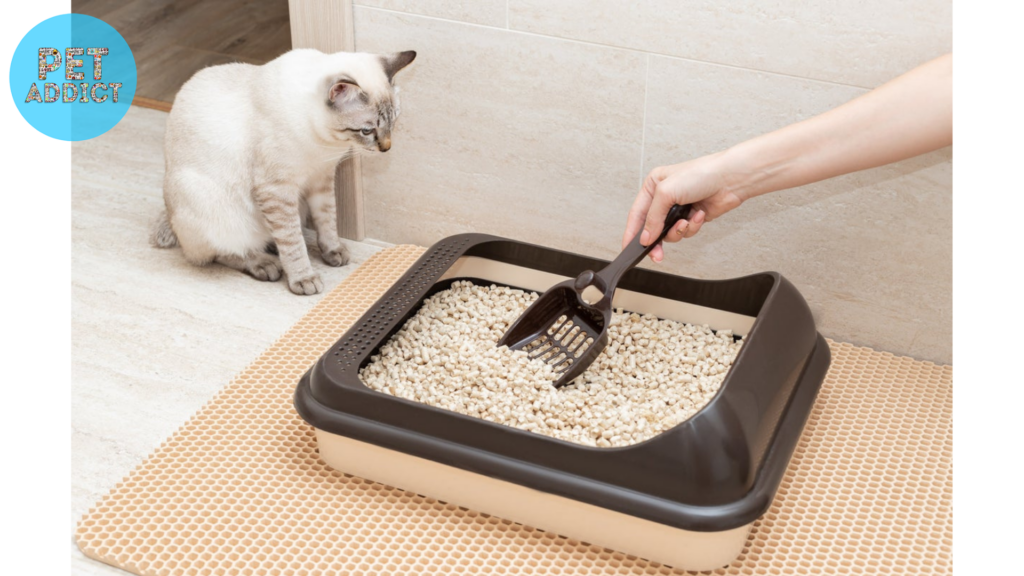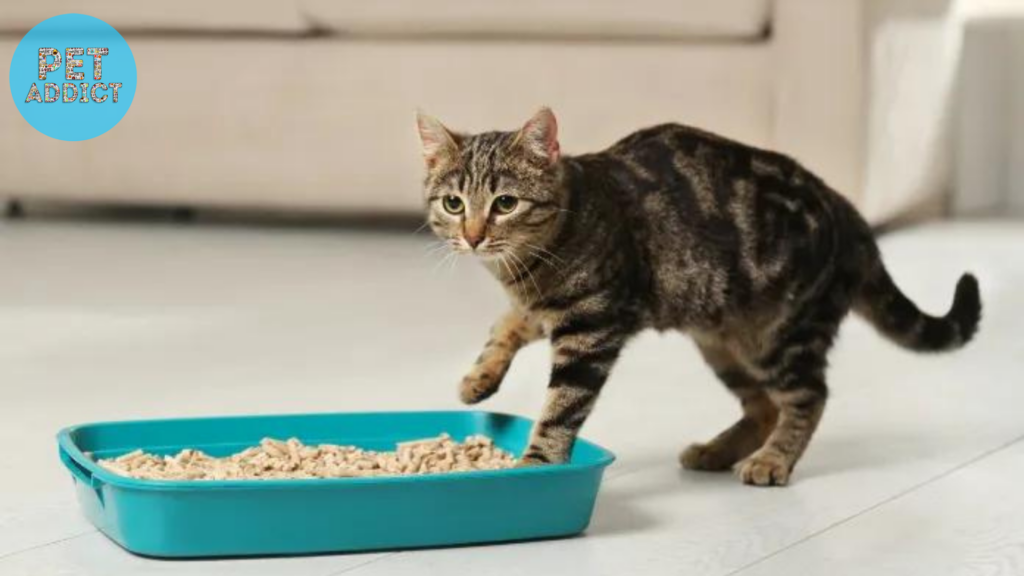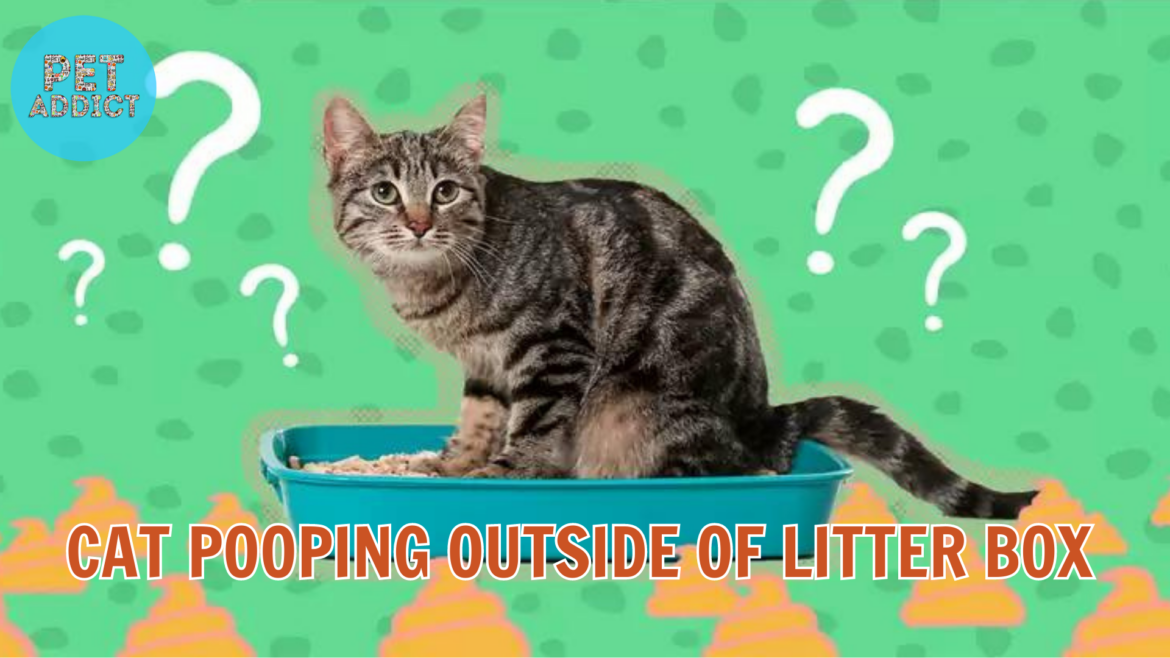Cats are wonderful companions, but when they start pooping outside of their litter box, it can be frustrating and concerning for pet owners. This behavior can indicate various underlying issues that need to be addressed. In this article, we will delve into the reasons why your cat might be pooping outside the litter box and provide effective solutions to help you and your feline friend overcome this challenge.
PetAddict.net – The best place where you can find everything about your pet!
Common Reasons for the Behavior

Stress and Anxiety
Cats are incredibly sensitive animals, attuned to their surroundings and emotions. Sudden changes in their environment, such as moving to a new home or the introduction of a new pet, can trigger stress and anxiety. These emotions can manifest as inappropriate elimination behavior, where your cat chooses to poop outside the litter box as a response to their discomfort.
Medical Issues
If your cat has suddenly started avoiding the litter box, it’s essential to consider underlying medical problems. Gastrointestinal issues, urinary tract infections, and even conditions like arthritis can cause discomfort while using the litter box. In such cases, your cat might associate the litter box with pain, leading them to seek alternative places to relieve themselves.
Litter Box Preferences
Cats have individual preferences, even when it comes to their bathroom habits. Some cats can be quite particular about the type of litter they prefer, the depth of the litter, and even the location of the litter box. If your cat is not using the litter box, it might be because their preferences aren’t being met.
Stress and Anxiety: How They Impact Your Cat

Changes in Environment
Cats thrive on routine and familiarity. A sudden change in their environment, such as moving to a new house or rearranging furniture, can cause stress. This stress might lead to them avoiding the litter box, as they try to cope with unfamiliar surroundings.
Multi-Cat Households
Living with multiple cats can be a joy, but it can also lead to territorial conflicts. Dominant cats might prevent others from accessing the litter box, causing anxiety and avoidance behavior in subordinate cats. This competition for resources can result in your cat seeking alternative spots to relieve themselves.
Lack of Enrichment
Cats are natural hunters, and they require mental stimulation to stay content. If they lack enrichment activities, they can become bored and anxious. This can manifest as behavioral issues, including avoiding the litter box. Providing interactive toys and playtime can help alleviate this problem.
Medical Issues: When to Consult a Veterinarian

Gastrointestinal Problems
Digestive issues can lead to urgency and discomfort, causing your cat to avoid the litter box. If you notice any changes in your cat’s stool or litter box habits, it’s crucial to consult a veterinarian. Addressing the underlying medical problem can often resolve the litter box issue.
Urinary Tract Infections
Urinary tract infections (UTIs) are not only painful but can also lead to inappropriate elimination. Cats might associate the litter box with the discomfort of urination, prompting them to find other places to relieve themselves. A vet can diagnose and treat UTIs effectively.
Arthritis and Mobility Issues
Just like humans, cats can suffer from arthritis and mobility issues as they age. Climbing into a high-sided litter box can become painful for them. If your cat is older or showing signs of joint pain, consider switching to a litter box with lower sides for easier access.
Litter Box Preferences: Catering to Your Cat

Litter Type and Texture
Some cats have strong preferences when it comes to litter. They might prefer a specific texture, scent, or clumping type. Experimenting with different litters can help you find the one that your cat is most comfortable using.
Box Placement and Accessibility
The location of the litter box matters. Cats prefer quiet and low-traffic areas where they can have privacy. Additionally, consider the accessibility of the litter box, especially for kittens or elderly cats that might have difficulty climbing into high-sided boxes.
Size and Depth of the Litter Box
A spacious litter box is essential for your cat’s comfort. If they don’t have enough room to turn around comfortably or bury their waste, they might seek other places to eliminate. Opt for a larger litter box to accommodate their needs.
Solutions for Encouraging Litter Box Use

Creating a Calm Environment
Minimize sudden changes in your cat’s environment. Cats thrive on routine, so try to keep their surroundings as consistent as possible. Providing hiding spots and cozy spaces can help your cat feel secure, reducing stress-related behavior.
Providing Adequate Enrichment
Engage your cat’s natural instincts by offering interactive toys, scratching posts, and play sessions. Mental and physical stimulation can alleviate anxiety and boredom, ultimately leading to more positive litter box behavior.
Regular Veterinary Check-ups
Schedule regular check-ups with your veterinarian. Even if your cat seems healthy, routine examinations can catch potential issues early on. Addressing any health concerns promptly can prevent litter box problems caused by medical conditions.
Behavioral Techniques to Address the Issue

Positive Reinforcement
Reward your cat with treats, praise, or gentle petting when they use the litter box appropriately. Positive reinforcement creates a positive association with the litter box, making your cat more likely to continue using it.
Utilizing Pheromones
Feline facial pheromones, available in diffusers and sprays, can help create a calming environment. These synthetic pheromones mimic the natural scents cats use to mark their territory, reducing stress and promoting litter box use.
Gradual Changes
When making changes to your cat’s litter box routine, take it slow. Cats can be sensitive to sudden adjustments. Whether you’re changing the type of litter or relocating the box, gradual transitions are more likely to be successful.
Introducing a New Litter Box: Step-by-Step Guide
Selecting the Right Box
Choose a litter box that suits your cat’s preferences. Some cats prefer covered boxes for privacy, while others prefer open ones that allow them to see their surroundings.
Placement and Introduction
Start by placing the new litter box near the old one. This gradual transition gives your cat time to explore the new box without feeling overwhelmed. Once your cat is comfortable, you can move the new box to the desired location.
Monitoring Progress
Observe your cat’s behavior closely as you introduce the new litter box. If they start using it regularly, you’re on the right track. If not, consider adjusting the placement or type of litter.
Conclusion: Restoring Harmony for You and Your Cat
Understanding the reasons behind your cat’s litter box behavior is crucial for finding effective solutions. By addressing stress, medical issues, and litter box preferences, you can create a more comfortable and positive environment for both you and your feline companion.
FAQs
1. Why is my cat suddenly pooping outside the litter box? Sudden changes in behavior can indicate stress, illness, or a need for a new litter box approach.
2. Is it normal for older cats to avoid the litter box? Older cats might struggle with mobility issues, making a switch to a more accessible litter box helpful.
3. Can stress really cause litter box problems? Yes, cats are sensitive to stress, and major life changes can affect their litter box behavior.
4. Should I punish my cat for pooping outside the box? No, punishment can worsen the behavior. Focus on positive reinforcement instead.
5. How long should I monitor progress with a new litter box? Give it a few weeks. Patience and gradual changes are key to success.




